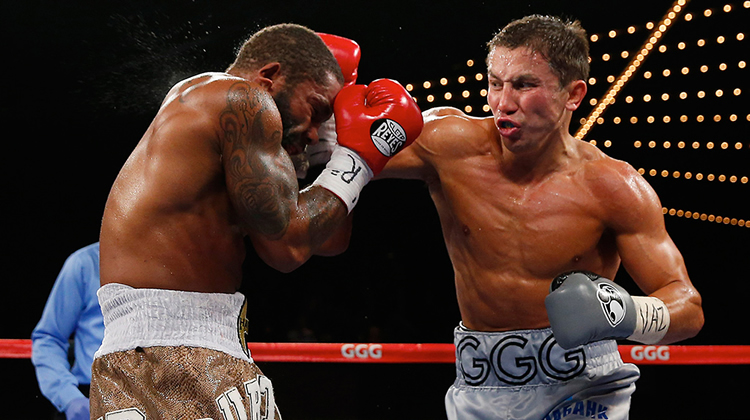
For those who aren’t part of the inner circle or, should we say, the inner ring of boxing, the sport can be bewildering. The publicity surrounding big matches can be confusing, but that’s the reason boxing has been dubbed a sweet science. Outside of being a boxer, the only other immersive experience comes when a spectator has full awareness of the moves, punches, and techniques involved.
Don’t worry, though; we won’t pour that onto you all at once. For now, we’ll talk about the punches—specifically, the four basic ones that boxing revolves around.
Four Basic Boxing Punches
The very foundation of boxing revolves around these four punches and, when you know about them and boxing’s other dimensions, you’ll scream from the top of your lungs just like any avid spectator.
1. Jab
Known as the “core” punch of boxing, the jab has several variations. If you’re relatively new to boxing, you might wonder why these short, quick-burst punches are a boxer’s go-to. In your mind, all the boxer needs to do is extend their arms to land a good hit. However, this means you do not see the utility of the punches.
Jabs function as well for defense as they do for the offense. They’ll hold the opponent back long enough for you to find an opening to land a big hit. Jabs also keep them from penetrating through your defenses.
Jabs are a defensive fighter’s best weapon. They’re the reason fighters like Floyd Mayweather, who employ the “waiting game” can come up with winning strategies even against the top offensive boxers.
2. Hook
The hook is a punch thrown in a semicircle using the rear or lead hand. Its main target is the jawline along the side of the head.
The hook is usually employed as a counterattack option to a barrage of jabs. Instead of stepping back, a defensive fighter can bait the opponent into giving him or her an opening for a hook. The hook is an offensive side punch you hope is fast enough to slip through a mid-jab opening and land smack on the opponent’s jawline.
The height and power behind a hook, particularly a left hook, has made the punch fight-ending. However, the move also leaves you open to attacks, so timing it correctly is crucial. When you see a left hook landing squarely on target, it’s not something that came out of nowhere. A lot of careful thought and planning usually comes with such a devastating move.
3. Heavy Cross
A jab variation that packs huge weight behind is called a heavy cross. Unlike a regular jab, though, a heavy cross can leave a fighter exposed. With their legs braced and weight shifting forward in a single direction, a boxer is left vulnerable to attacks from almost all directions when performing this move.
Heavy crosses are also energy-sapping because of the groups of muscles used to put power behind the punch. Of course, all that would be worth it if the punch meets its target. These punches deal heavy damage that can slow opponents down. If that’s not so apparent to your “uninitiated” eye, then it should be reflected accurately by the scorecard.
4. Uppercut
Everybody loves the uppercut. There’s so much intuitiveness behind the punch, making its popularity difficult to question. Like the hook, this punch is nasty and jaw-breaking. Instead of the hip-drawn energy of its power-packed counterpart, the uppercut is fueled by the sudden upper movement of the entire torso and shoulders.
While this makes the uppercut a considerably powerful punch, it usually doesn’t give it enough power to cause knockouts. The technique behind the punch and its location suggests that it’s only meant to shake an opponent and make them lose their footing. Still, a couple of well-placed uppercuts can pave the way for a boxer to deliver a knockout punch.
Boxing Combinations
Once a boxer has mastered the four basic punches, they can deliver them rapidly to create combinations. Boxers use combinations to form winning strategies against an opponent. They incorporate them with a little bit of everything, from devastating offensive moves to protective reflexes and defensive fallbacks.
Regular boxing training is what paves the way for these combinations. A pad trainer will use them to bring thrill and variety to a workout session. In these sessions, a boxer works their shoulder, chest, core, and leg muscles. They’ll also learn to draw power from the right muscles and not overwork parts like the neck and traps since they can easily strain.
Learn More About Boxing Today
Knowing the four basic boxing punches is just the first step. Next, you’ll need to learn how to perform them and create different combinations.
If you dream of becoming a boxer someday, train hard and don’t let anything hold you back. After all, while techniques are important, it’s passion and determination that ultimately takes you to the world stage.



